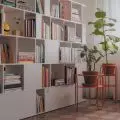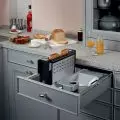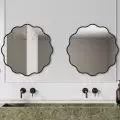{tag:studenci} - a graduate of the Faculty of Architecture at the Warsaw University of Technology - has created a design for a universal urban house in Powiśle. Her idea is not only a response to the contemporary needs of residents, but also an attempt to anticipate future changes in the use of buildings.
land development
© Marta Sójka
universal architecture as a response to the changing needs of users and users' needs
The project's goals focus on creating a space that not only meets current requirements, but is also adaptable to changing living conditions. In the face of dynamic urban development and the changing needs of male and female residents, the question arises of how to design buildings that will stand the test of time without the need for costly reconstruction. Marta Sójka introduces the concept of a universal building, with a flexible structure that can perform different functions depending on the needs.
axonometry
© Marta Sójka
why do we need flexible architecture?
The implementation method of this project is based on the assumption that the form of the building should be flexible enough to easily adapt to changing functions, without the need for extensive construction work. The building, located in Warsaw's Powiśle district, combines traditional urban architecture with modern spatial solutions. Situated on a corner plot on Dobra Street, it consists of three interconnected blocks that form a coherent whole, but at the same time can function independently, depending on the needs of the users and occupants. Thanks to its modular design, the building can be expanded both horizontally and vertically, giving it great flexibility in use. The use of a staircase with a bypass and the regular arrangement of utility closets makes it possible to freely divide the interiors into smaller or larger units, without the need to interfere with the structure of the building.
elevation
© Marta Sójka
Powiśle an ideal place for universal architecture
Embedding the building in the context of the location is not accidental either. Powiśle, with its rich history and unique character, is an ideal place for a project with such a flexible structure. The district, which is a link between historic architecture and modern developments, is itself a symbol of adaptation and changeability. A building that fits into the context of the district, while adapting to future changes, reflects the "spirit" of this part of Warsaw.
visualization
© Marta Sójka
thoughtful structure of the building
The functional and spatial concept is based on the idea of creating a building that, thanks to its structure, will be able to adapt to the changing needs of its users. Three blocks, rising from the first floor of the building, create a dynamic spatial composition that is both coherent and flexible. The heights of the buildings have been designed to form a harmonious whole with the existing buildings, while at the same time providing a variety of internal spaces.
first floor visualization
© Marta Sójka
The repetitive floors, which are the clou of the project, were designed in such a way that their flexible use is possible. The regular rhythm and repetition of elements, such as windows and loggias, do not impose specific functions on users and users, but give them freedom of arrangement. The rooms in the building have been designed in an amphilad fashion, meaning that they are connected by wide passageways, allowing them to freely combine or divide spaces as needed. The lack of corridors and the possibility of arranging the interiors with movable partitions and mobile equipment, gives the building a versatile character. The flexibility of the space is key to keeping the building up-to-date over the years.
loggia visualization
© Marta Sójka
Marta Sójka's design is a reaction to the problem of aging buildings in rapidly growing cities. By introducing a flexible and versatile structure that can adapt to different functions, the author has created a concept for a building that is not only functional, but also ready for future changes.
visualization of a large apartment
© Marta Sójka
































































